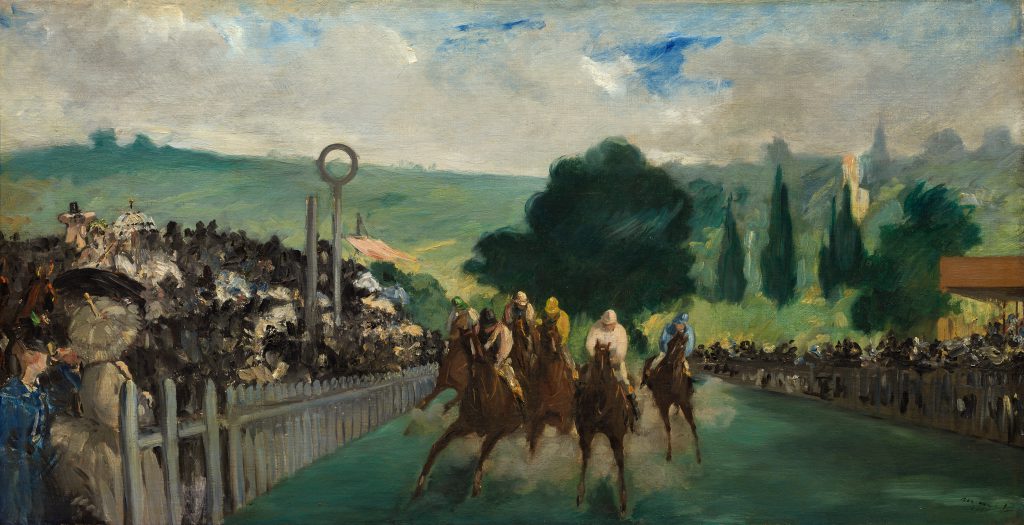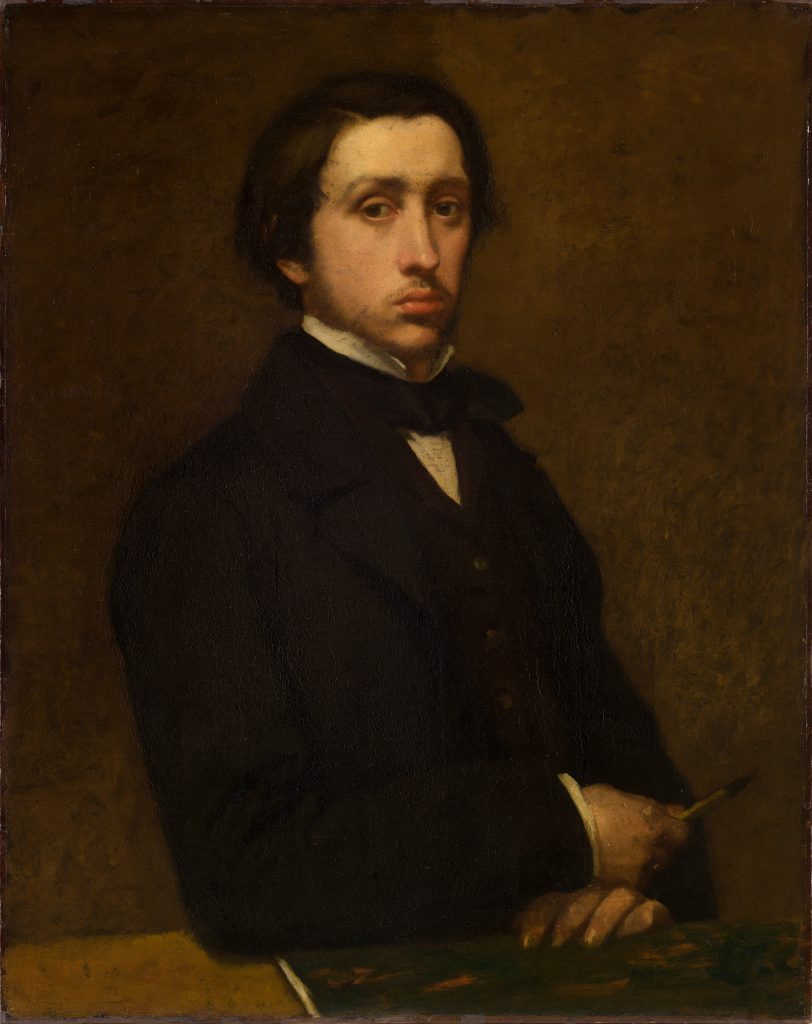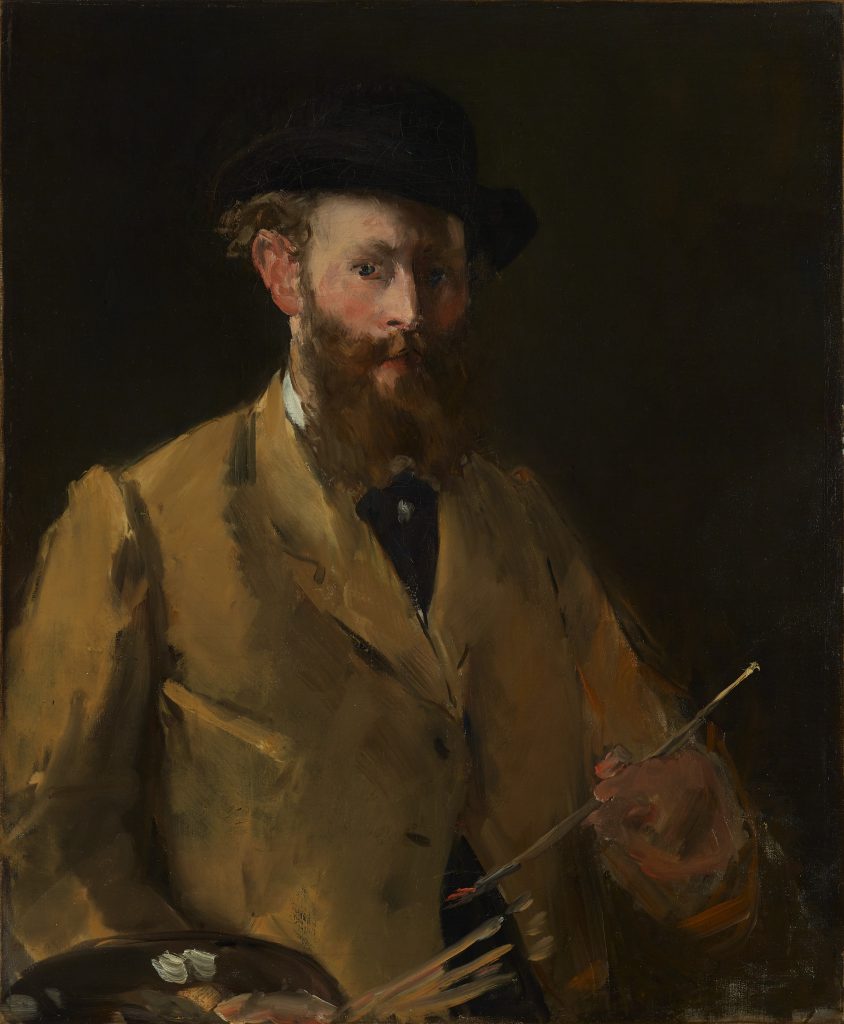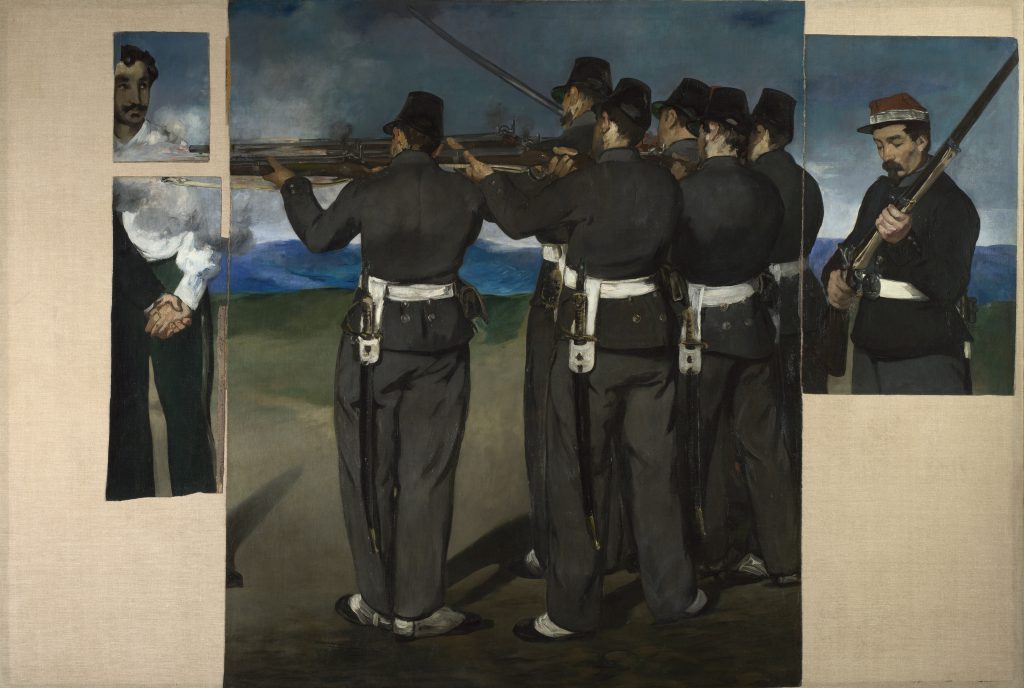
“To discuss Manet and Degas together means trying to understand one from the other, examining their differences and similarities, and sometimes their divergences.” This line is from the wall text that opened the Manet/Degas exhibition at the Musée d’Orsay, which I saw on a trip to Paris over the summer. Organized by curators at the Orsay, the Louvre, and the Met, the same exhibition opens at the Metropolitan Museum of Art in New York on September 24 and runs through January 7. To the right of this text, the artists’ self-portraits greeted visitors—Manet’s, painted in 1879 when he was over forty and already renowned and self-assured, hung next to Degas’s, painted in 1855 at the age of twenty, appearing timid and stubborn. If the show’s purported goal is to “bring Manet and Degas back into the light of their contrasts,” there is an imbalance evident from the start: Manet, though older by only two years, is positioned here as the wiser, more formidable painter—a sense that permeates each room.


Manet’s controversial Olympia, 1863, is given its own wall in the exhibition, while his Le Déjeuner sur l’herbe (Luncheon on the Grass), 1863, is part of the d’Orsay’s permanent collection. Meanwhile, snarky quotes by Degas appear on the wall text—“Manet stupid and shrewd, a playing card without printing, a Spanish trompe l’oeil, painter. Anyway, you will see!”—alongside his accusations that Manet copied his subject matter. Nevertheless, after Manet’s death in 1883, Degas began collecting his friend’s work, helping to cement his recognition as one of the greatest modernist painters. It’s as though only after Manet’s passing could Degas bring himself to acknowledge his talent. And then, of course, there is the issue of Degas’s legacy, which the exhibit hardly explores.
Although Degas is known for his portrayal of gesture and movement, scenes that established him as an Impressionist, the exhibition omits his iconic paintings of dancers, and features only two of his nudes. The wall text acknowledges that Degas’s “portrayal of the female nude has earned him a reputation as a misogynist artist,” but stops short of a thorough analysis, stating instead, “The reality is far more complex, and in his writings, we can perceive the sensitivity of a man preoccupied with his heart and dreaming of marital bliss.” Yet he was notorious for screaming at and underpaying his young models.
The exhibition, while poignantly dissecting the dynamics of an artistic friendship and rivalry, hardly knows how to address Degas’s wavering reputation, which has the impact of once again putting him on a rung lower than Manet: “Female nudity, far from being objective, displays a truth that is as engaging as it is iconoclastic,” the wall text alongside Degas’s baigneuses declares. But what is the difference between “objective” and “truth” here? And how is the female nude—one of the oldest and most ubiquitous subjects in Western painting—remotely iconoclastic?
The narrow curatorial vision detracts from the paintings, and did little to add to Manet and Degas’s legacy. The artists are always on view together; they are always in the same wing of any museum’s permanent collection. I found very few paintings that gave me insight beyond what I’ve come to expect from any Impressionist wing, save the canvases that bear the scars of their rivalry. These instances, in which the painters went so far as to alter each other’s work, help to propel the exhibition.

Degas had remarkable descriptive power (“the muscles, I know them, they’re my friends,” he wrote)—an ability that shines through in the exhibition’s standout pieces like Édouard Manet et sa femme (Édouard Manet and his wife), 1868–69. The painting depicts Manet leaning against a sofa, one leg on the ground, the other up on the cushion. He smiles into the distance as if he’s just thought of something clever, and listens to his wife, Suzanne, play the piano nearby. But the canvas was sliced off where her profile begins. It was Manet himself who took a knife to the painting after Degas gifted the piece to the couple. The mutilation cemented their rivalry, as Degas retrieved the work and returned a still life Manet had once gifted him.

It is fitting, then, that the exhibition closes with Manet’s anti-imperialist monument The Execution of Maximilian, 1867–68, a large composition inspired by Goya’s The Third of May 1808. After Manet died in 1883, his heirs cut up Execution; Degas bought the fragments and reassembled what he could of the painting. In a poignant twist, the narrative comes full circle: where Manet once mutilated his friend’s canvas, Degas salvaged and restored Manet’s work after his death.
This exhibition is organized by the Musée d’Orsay, where it was presented from March 28 to July 23, 2023; the Musée de l’Orangerie; and the Metropolitan Museum of Art, where it will be presented from September 24, 2023 to January 7, 2024.